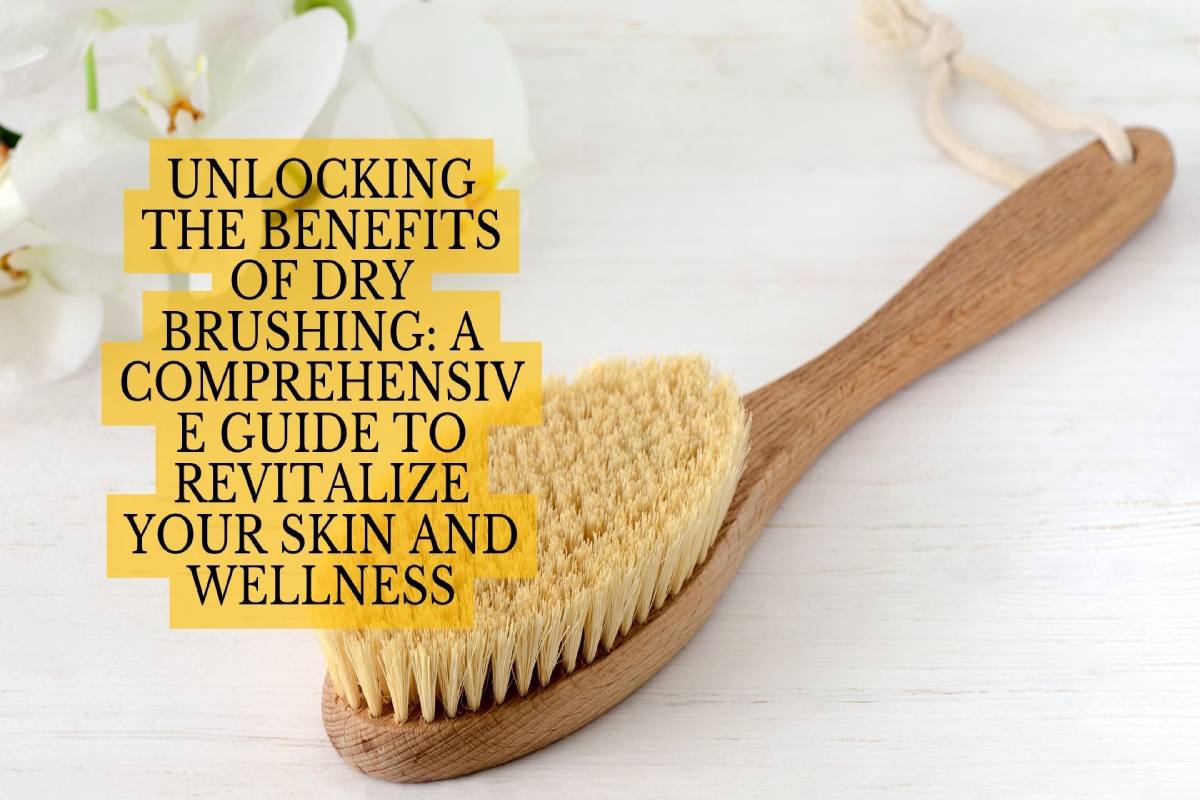Dry brushing has gained significant popularity in recent years as a natural skincare technique with a wide range of benefits. This ancient practice involves using a dry brush on the skin to exfoliate and stimulate blood circulation. With roots in various cultures and an increasing number of enthusiasts, dry brushing has become a trend in modern skincare. In this comprehensive guide, we will delve into the world of dry brushing, exploring its benefits, technique, integration into skincare routines, and its cultural and scientific aspects.
Table of Contents
Understanding Dry Brushing
Dry brushing is a technique that involves gently brushing the skin with a dry brush, usually made of natural bristles or plant fibers. The bristles sweep across the skin, removing dead cells and stimulating blood flow. The benefits of dry brushing extend beyond mere exfoliation, encompassing improved skin health, detoxification, and potential reduction in cellulite.
The act of dry brushing helps to remove dead skin cells, unclog pores, and allow the skin to breathe, resulting in a smoother and more radiant complexion. Additionally, the increased blood circulation promotes oxygen and nutrient delivery to the skin, which can improve its overall appearance and vitality. Dry brushing also stimulates the lymphatic system, aiding in detoxification by facilitating the removal of waste and toxins from the body.
Choosing the right brush is crucial for an effective dry brushing routine. Opt for a brush with natural bristles or plant fibers that are not too harsh on the skin. Brushes with long handles are useful for reaching all areas of the body, while smaller brushes can be utilized for more targeted treatments.
The Dry Brushing Technique
To maximize the benefits of dry brushing, it is essential to follow the proper technique. Begin by preparing both your skin and brush. Ensure that your skin is dry, and the brush is clean. Ideally, perform dry brushing before bathing or showering.
Start with gentle, upward strokes, moving from your feet upwards towards your heart. Use long, sweeping motions, covering each area of the body, but avoiding sensitive areas, such as the face or areas with broken or irritated skin. It’s important to maintain a light pressure while brushing to avoid causing any discomfort or irritation.
For optimal results, establish a consistent dry brushing routine. Aim to brush your skin at least a few times a week, adjusting the frequency according to your skin’s sensitivity and response. Sessions typically last between 5 to 10 minutes.
While dry brushing offers numerous benefits, it may not be suitable for everyone. Individuals with sensitive skin or certain health conditions, such as eczema or psoriasis, should exercise caution or consult with a dermatologist before incorporating dry brushing into their routine.
Integrating Dry Brushing into Your Skincare Routine
Dry brushing can be seamlessly integrated into your existing skincare routine. Following a dry brushing session, it is recommended to moisturize the skin to replenish lost moisture and further enhance its benefits. Choose a nourishing moisturizer that suits your skin type.
Dry brushing can also be complemented with other exfoliation methods, such as gentle scrubs or chemical exfoliants. However, it’s important to space out these treatments to avoid overexfoliation, which can lead to skin irritation.
Personal experiences and testimonials from dry brushing enthusiasts indicate a range of positive outcomes, including improved skin texture, reduced cellulite appearance, and an overall sense of well-being. Experimenting with dry brushing and incorporating it into your daily or weekly routine can help you discover the benefits firsthand.
The Science Behind Dry Brushing
While dry brushing has been practiced for centuries, scientific research exploring its effects is relatively limited. However, preliminary studies have shown promising results. Research suggests that dry brushing may enhance blood circulation, improve skin barrier function, and promote lymphatic drainage. Further studies are needed to fully understand the mechanisms and potential therapeutic applications of dry brushing.
Expert opinions from dermatologists and skincare specialists affirm the benefits of dry brushing, emphasizing its role in exfoliation, lymphatic drainage, and improved skin texture. However, it is essential to approach dry brushing with realistic expectations, understanding that individual results may vary.
Exploring Other Cultural and Holistic Traditions
Dry brushing is not a modern fad but has been part of various cultural and holistic traditions for centuries. In Ayurvedic medicine, dry brushing is believed to support overall well-being by invigorating the skin, stimulating energy flow, and promoting detoxification. Indigenous cultures also have their own unique practices that involve similar techniques aimed at maintaining healthy skin and holistic balance.
By exploring these cultural and holistic traditions, we gain a deeper appreciation for the roots of dry brushing and the wisdom passed down through generations.
Dry brushing offers a multitude of benefits for your skin and overall wellness. By incorporating this simple yet effective technique into your skincare routine, you can experience exfoliated, rejuvenated skin and improved circulation. Remember to choose the right brush, follow the correct technique, and listen to your body’s response.
While dry brushing has gained popularity, it is crucial to approach it with a balanced perspective, acknowledging its cultural significance and understanding the scientific evidence available. Embrace dry brushing as a part of your self-care routine, and let your skin and well-being flourish.

